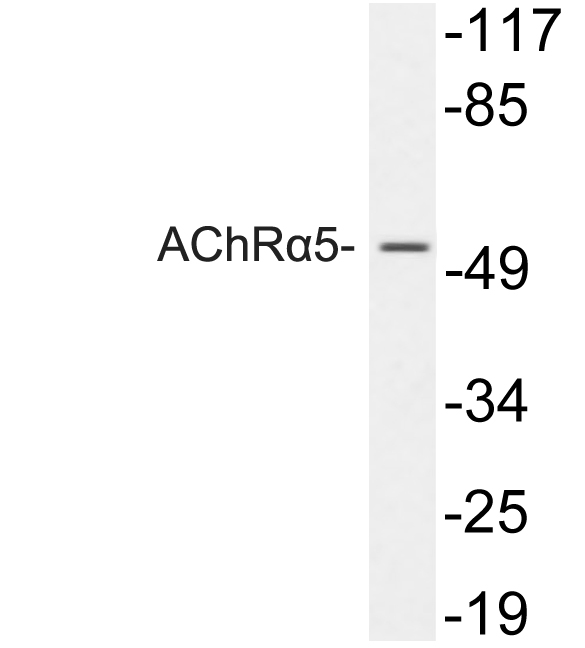产品名称
AChRα5 Rabbit Polyclonal Antibody
别名
CHRNA5; NACHRA5; Neuronal acetylcholine receptor subunit alpha-5
蛋白名称
Neuronal acetylcholine receptor subunit alpha-5
反应种属
Human,Mouse,Rat,Monkey
存储缓冲液
Liquid in PBS containing 50% glycerol, 0.5% BSA and 0.02% New type preservative N.
Human Gene Link
http://www.ncbi.nlm.nih.gov/sites/entrez?db=gene&term=1138
Human Swissprot No.
P30532
Human Swissprot Link
http://www.uniprot.org/uniprotkb/P30532/entry
Mouse Gene Link
http://www.ncbi.nlm.nih.gov/sites/entrez?db=gene&term=110835
Mouse Swissprot No.
Q2MKA5
Mouse Swissprot Link
http://www.uniprot.org/uniprot/Q2MKA5
Rat Swissprot Link
http://www.uniprot.org/uniprot/P20420
免疫原
The antiserum was produced against synthesized peptide derived from human AChRalpha5. AA range:166-215
特异性
AChRα5 Polyclonal Antibody detects endogenous levels of AChRα5 protein.
稀释度
WB 1:500 - 1:2000. ELISA: 1:10000. Not yet tested in other applications.
宿主
Polyclonal, Rabbit,IgG
背景介绍
The protein encoded by this gene is a nicotinic acetylcholine receptor subunit and a member of a superfamily of ligand-gated ion channels that mediate fast signal transmission at synapses. These receptors are thought to be heteropentamers composed of separate but similar subunits. Defects in this gene have been linked to susceptibility to lung cancer type 2 (LNCR2).[provided by RefSeq, Jun 2010],
细胞定位
Cell junction, synapse, postsynaptic cell membrane; Multi-pass membrane protein. Cell membrane; Multi-pass membrane protein.
功能
disease:Genetic variations in CHRNA5 may be associated with susceptibility to lung cancer type 2 (LNCR2) [MIM:612052].,function:After binding acetylcholine, the AChR responds by an extensive change in conformation that affects all subunits and leads to opening of an ion-conducting channel across the plasma membrane.,similarity:Belongs to the ligand-gated ionic channel (TC 1.A.9) family.,subunit:Neuronal AChR seems to be composed of two different type of subunits: alpha and non-alpha (beta).,
纯化
The antibody was affinity-purified from rabbit antiserum by affinity-chromatography using epitope-specific immunogen.


